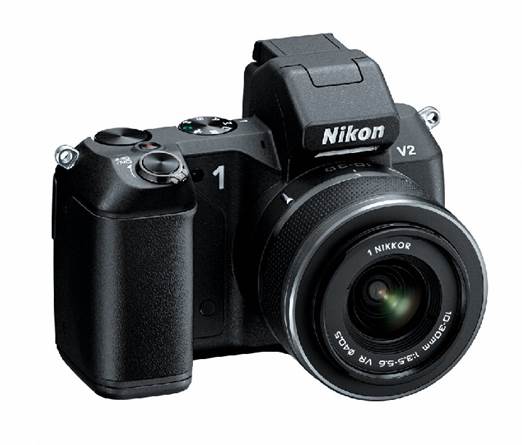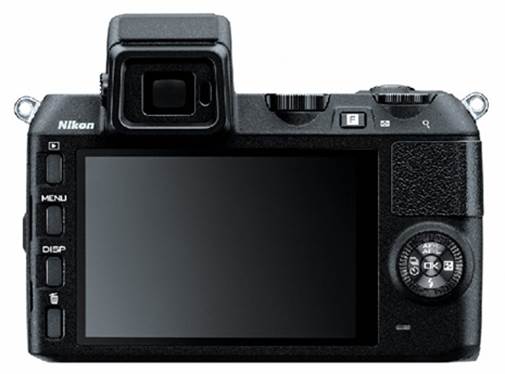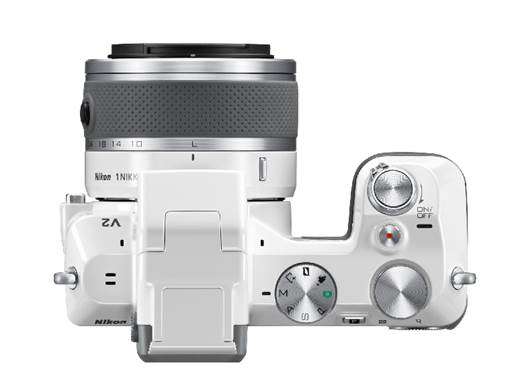Nikon’s latest Compact System Camera
is almost unrecognizable in terms of design when compared to its predecessor.
Are the improvements reflected internally too?
The Compact System Camera (CSC) market has
seen an explosion in popularity in recent times, with the marriage between the
versatility of interchangeable lenses and the practicality of having a body
smaller than a traditional DSLR proving a winning formula. Nikon was a relative
latecomer to the market, with the 1 series launching towards the end of 2011.
When it arrived, it die so with a host of bells and whistles, although the more
advanced V1 model left some disappointed by the combination of a high price-tag
and a perceived tendency towards the more entry level photographer in elements
such as the deep-rooting of manual modes within the menu system.
The V2 picks up where the V1 left off, with
many similar features and a completely redesigned body. The question is, does
it improve on the impressive, yet ultimately flawed V1?

NIKON
1 V2
Features
One of the areas of criticism of Nikon’s 1
series is the choice of sensor size. The version found in models to date
measures 13.2 x 8.8mm and offers a 2.7x crop factor compared to a full-frame
sensor. This sensor is physically smaller by some distance than that found in
the vast majority of other CSCs, somewhere in between that found in a
conventional compact camera and a Four Thirds system sensor.
The Nikon 1 V2 inherits this sensor and as
a result the same concerns remain. The only difference to the sensor is that
the resolution is now 14.2MP as opposed to the 10.1MP found in the VI. This
leap in resolution raises its own concerns, with a higher resolution on a smaller
sensor normally presents issues with noise at higher ISO settings.
The V2’s sensor is capable of capturing Raw
and JPEG files as well as HD video at a range of resolutions, the maximum being
1920 x 1080 and a rate of 60i. A criticism of the VI was that the video capture
was only available in auto mode - thankfully the V2 now features full PASM
control when shooting video. The advanced video modes found in the VI remain,
with the option to shoot video at 400fps and 1200fps, although these play back
at a reduced resolution of 640 x 240 and 320 x 120 pixels respectively.
One of the new features finding a home on
the Nikon 1 V2 is the EXPEED 3A image processor. This "next-generation”
dial processing engine processes images at 850 megapixels a second and is the
key to some impressive headline performance figures. For example, the
continuous shooting speed heads up to a lightning-fast 60fps at full
resolution, although this rate is only available for 40 frames and with a fixed
focus point. If you want to utilize the camera's AF system, you’ll be able to
shoot at a still-impressive 15fps for around 45 frames.
Although the V2 can hardly be described as
a camera bursting at the seams with new features, there are certainly enough to
pique the interest. Another criticism of the VI was the lack of a built-in
flash, and the fact that the optional flashgun cost in excess of $160. The good
news is that the Nikon V2 features a built-in flash with a full range of flash
modes, while those looking for more flash power, or to utilize the flash guns
purchased for the VI, will be able to do so thanks to the inclusion of an
accessory port above the viewfinder prism and on-board flash.

The
V2 features lightning-fast focus speed and good accuracy, is perfect for
capturing candid images
As mentioned, there are other elements of
the specification that remain the same as on the VI, two of which are the LCD
screen and viewfinder. The rear of the camera houses a 3in, 921k-dot TFT LCD
which, while not the highest resolution in its class, is certainly in keeping
with the majority of CSCs on the market today. Above the LCD screen sits an
impressive 0.47in, 1,440k-dot TFT LCD viewfinder complete with brightness
adjustment and dioptre control to suit any of your optical needs.
The V2 features a full range of shooting
controls aimed at making the image capture process as simple as possible. These
include not only an advanced auto mode but also a Best Moment Capture settings
which includes the Smart Photo Selector feature which takes up to 20 high-resolution
images and recommends five of the best for you to keep. Alongside these
simplified nodes sits full PASM shooting capture to allow for advanced
photographers to get the images they're looking for.
Design
While the alterations to the specification
on the V2 in comparison to the VI are best described as minimal, the same
cannot be said of the design of the camera itself. Putting the two side by
side, it's difficult to even ascertain the lineage of the V2 such are the
alterations to the design.
Where the VI was something of a nondescript
rectangular slab of a Compact System Camera, the V2 has a lot more of a DSLR
about it - albeit somewhat of a miniaturized version. One of the significant
features of this design change is the addition of a pronounced handgrip to tie
right of the camera. This handgrip is of a substantial size and offers a
pleasingly firm grip on the camera, helped in no small part by the rubberized
coating both on the front and rear of the grip.

The
V2 displays a reasonable dynamic range, although there is a slight tendency for
highlights to
The raw measurements of the V2 suggest that
the camera isn't actually that much smaller than the VI. In fact, the camera is
only slightly narrower, while it measures in both wider and deeper than its
predecessor. These measurements are skewed by the height of the V2’s viewfinder
and the protrusion of the hand grip - the actual body of the V2 is much slimmer
than the VVs body, and certainly feels more comfortable in the hand.
The model’s top plate not only features a
command dial for altering shooting functions, but also features a conventional
mode dial - this is particularly welcome as the VI before only featured a
half-baked mode dial on the camera's rear that didn’t offer access to PASM shooting
modes, items which had to be reached through the camera s menu system itself.
It’s worth pointing out that while the design overhaul is entirely we come, and
does enhance both the look and feel of the V2, the new body possibly won’t be
to everyone’s taste and is certainly worth inspecting before purchase.